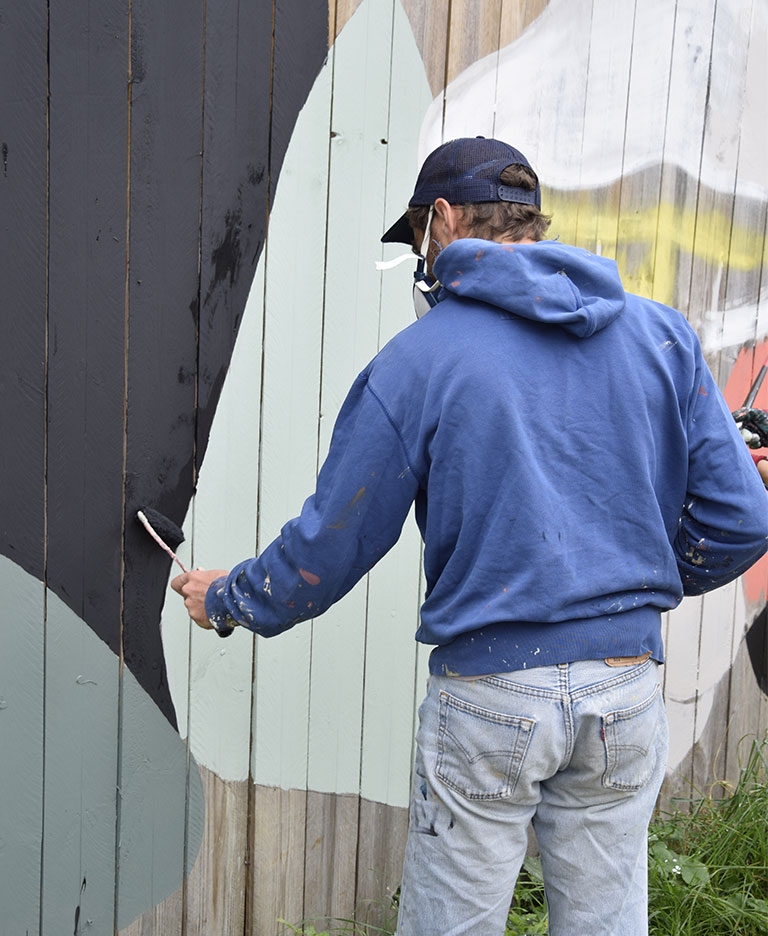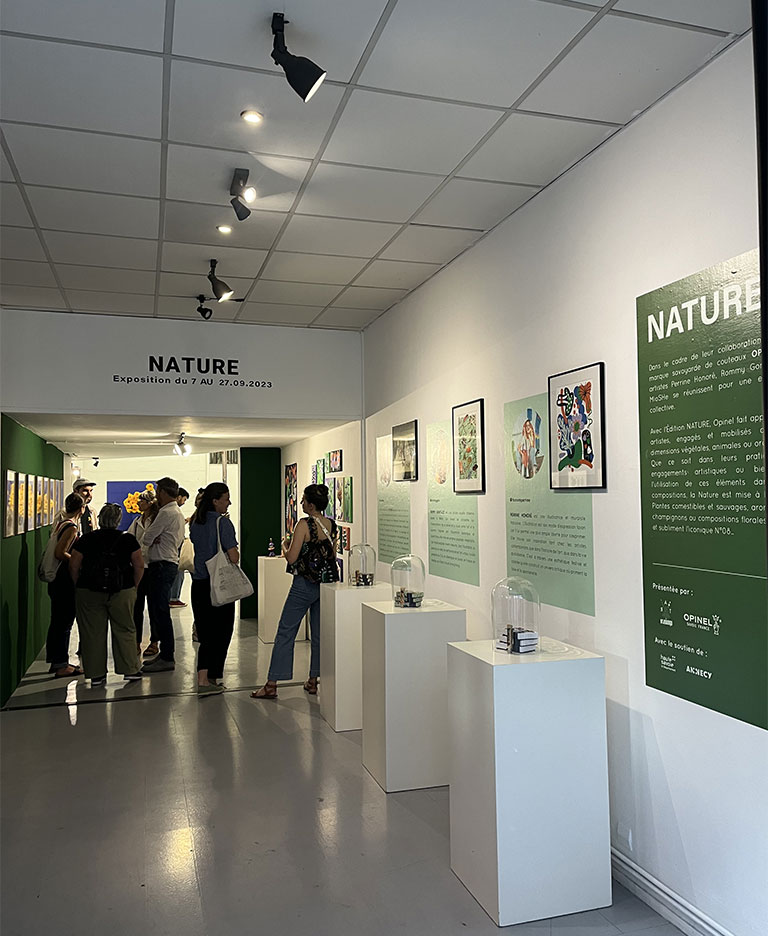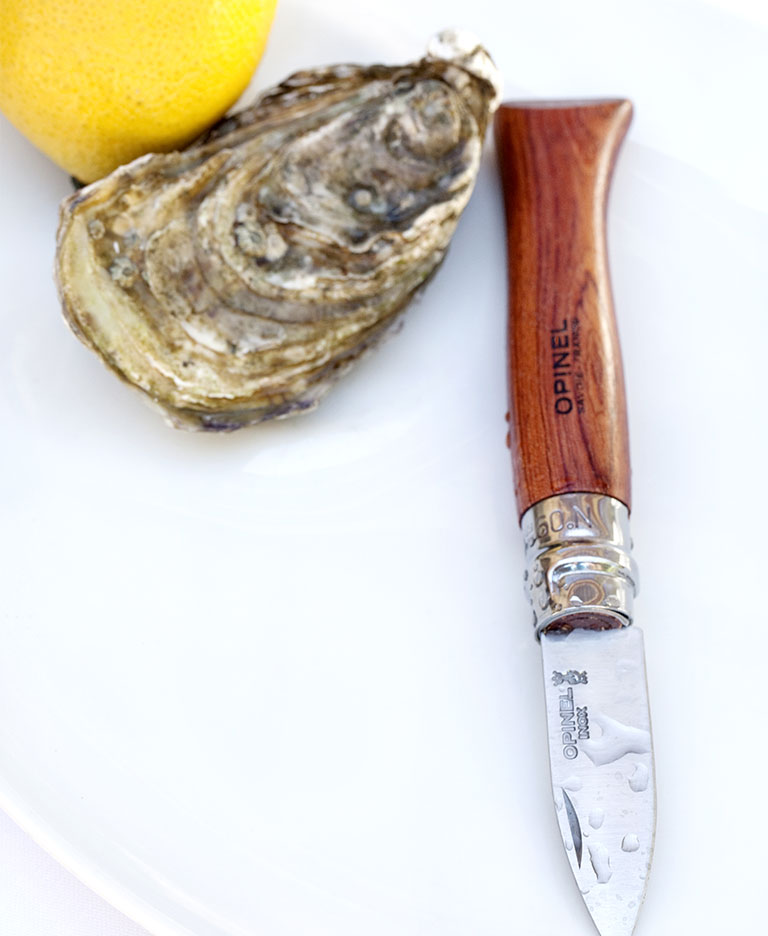Are you sure you want to perform this action?
Read the interview with the artist mioSHe, real name Antoine Martinet, who took part in the Nature edition.

Can you introduce yourself in a few words?
My name is Antoine Martinet, I'm from Brittany and I lived near the sea as a kid where I got into surfing, but I also grew up in an urban environment since I live in the city of Rennes.
What's your background?
I did 3 years at the Beaux-arts in Rennes. It was a valuable experience that helped me to find my own unique place in the visual arts landscape: I'm at the crossroads of the 'academic' world, the tradition of art history and painting, and a more 'urban' culture through my work in muralism.

What are you currently working in?
I mainly paint murals in public spaces for various organisations such as festivals, projects with French institutes abroad, social housing landlords in France and a few contemporary arts centres.
I also work in a variety of media: in recent years I've developed a project called Vestigum Park where I paint on amphorae and have tapestries woven by a workshop in Aubusson.
What are your sources of inspiration?
I draw my inspiration mainly from art history: I'm as interested in ancient Greek ceramics as I am in medieval dyes or the Flemish Renaissance paintings of Jérôme Bosch.
Among my contemporary influences I'm very drawn to the work of choreographer Gisèle Vienne or the experimental manga scene at Edition Matière.
Did you always want to be an artist?
I've always said to myself that I wanted to make a living from drawing. But it took some perseverance before I was able to get into it and become a professional.
What do you like most about your job?
Art takes you on a journey in every sense of the word: inside, you're constantly moving, firstly in your work so you don't get stuck behind the times, and also outside through encounters.
Working in response to the specific context I'm working in is what I enjoy most about my profession: interacting with people, understanding the environment and trying to echo the surroundings in which the work is going to take shape.
What made you want to work with Opinel?
Thanks to the Art By Friends gallery in Annecy, we've been working together since 2020, mostly on large-scale murals.

Art By Friends
How did you come up with the idea for the designs on our knives? Were you inspired or influenced?
"Vrikshasana" is a tribute to nature, and could even be the name of this knife. The full moon could also transform this yogic creature into Selene, goddess of the full moon or Demeter, divinity of mother earth and harvests. The strength of her posture transforms her into a fruit tree. Ancient mythology and a link with nature was clearly the driving force behind this creation.


Can you roughly tell us how long this project took you?
It's hard to put a figure on how long it takes, as there are several weeks between the idea germinating and the design and colours being fully approved.
Do you often work with brands like Opinel?
This is the first time I've worked directly with a brand.
Do you have a preference for one of our Opinel knives?
I think the one that chimes with me most is the No. 10, the one with the corkscrew (wine, another of my passions!).

Do you have any memories about Opinel that you can share with us?
Family picnics on the beaches of Brittany, opening oysters (of course without damaging either the shell or the blade, not an easy task...).








